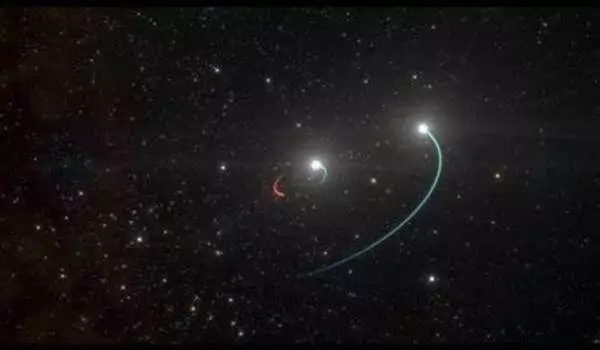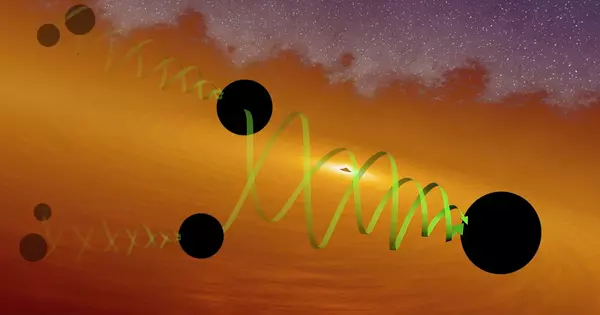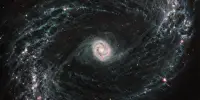Gamma-ray bursts (GRBs) are extremely bright, powerful explosions that spew out copious amounts of gamma radiation. They fall into two primary categories: those with long durations and those with short durations. Extended bursts of gamma radiation are typically linked to the demise of massive stars.
A recent study suggests that a star close to the supermassive black hole at the center of the Milky Way Galaxy originated outside of the galaxy. This is the first time a star outside of our galaxy has been discovered close to a supermassive black hole.
Sagittarius A*, the supermassive black hole at the center of our galaxy, is observed to be surrounded by a large number of stars. However, the surrounding environment is too hostile for stars to form close to the black hole due to its strong gravity. It is necessary that all of the observed stars originated elsewhere and moved in the direction of the black hole. Where did the stars form, one wonders in light of this.
The team used the Subaru Telescope over the course of eight years to observe the star S0-6 located only 0.04 light-years away from Sagittarius A*. They determined that S0-6 is about 10 billion years old and has a chemical composition similar to stars found in small galaxies outside the Milky Way, such as the Small Magellanic Cloud and the Sagittarius dwarf galaxy.
According to research conducted by a multinational team under the direction of Shogo Nishiyama at Miyagi University of Education, some stars may have originated from sources outside the Milky Way entirely, which is farther away than previously believed.
The team used the Subaru Telescope over the course of eight years to observe the star S0-6 located only 0.04 light-years away from Sagittarius A*. They determined that S0-6 is about 10 billion years old and has a chemical composition similar to stars found in small galaxies outside the Milky Way, such as the Small Magellanic Cloud and the Sagittarius dwarf galaxy.

The most plausible explanation for S0-6’s composition is that it originated in a small galaxy that is now extinct and was absorbed by the Milky Way while it was orbiting the galaxy. This is the first empirical evidence that points to some of the nearby stars of Sagittaius A* as having formed outside of the Galaxy.
S0-6 has to have traveled more than 50,000 light-years from outside the Milky Way to get to the area around Sagittarius A* during its 10 billion-year existence. S0-6 most likely traveled over 50,000 light-years, descending slowly in a spiral fashion to the center rather than in a straight line.
There are still many questions according to Nishiyama, “Did S0-6 really originate outside the Milky Way galaxy? Does it have any companions, or did it travel alone? With further investigation, we hope to unravel the mysteries of stars near the supermassive black hole.”
















